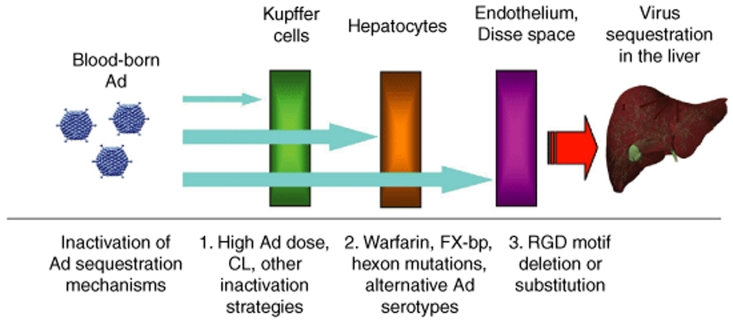Figure 8.
Schematic representation of mechanisms mediating the sequestration of blood-born adenovirus (Ad) in the liver and approaches to inactivate them. Upon entry of Ad into a bloodstream, a defined set of specific molecular mechanisms become engaged in a redundant, synergistic, and orderly manner to ensure the clearance of blood-born Ad from circulation. If small amounts of Ad particles appear in blood, the virus trapping by Kupffer cells works as a first dominant mechanism, mediating Ad sequestration in the liver. When the Ad dose exceeds the capacity of Kupffer cells to trap the virus, hepatocytes absorb blood-born Ad particles in a blood factor–dependent manner, serving as a second dominant mechanism mediating sequestration of blood-born Ad. However, when the Ad dose is high and both the Kupffer cells and blood factor pathways are inactivated, sinusoid endothelial cells and the anatomical architecture of liver sinusoids become the third line of defense that sequesters Ad particles in an RGD motif–dependent manner. CL—clodronate liposomes; FX-bp—FX binding protein.

